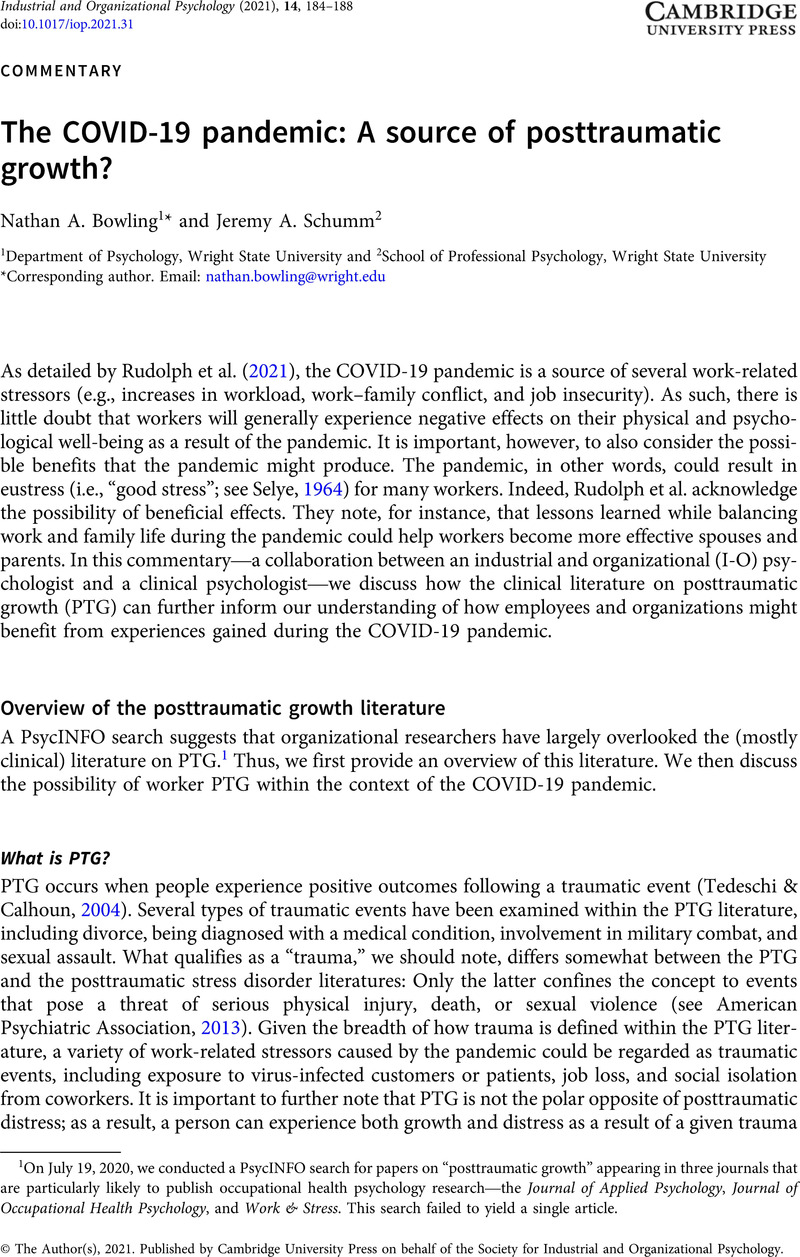Crossref Citations
This article has been cited by the following publications. This list is generated based on data provided by Crossref.
Dwiwardani, Carissa
Shelton, Andrew J.
and
Oda, Alan Y.
2022.
Attachment and Mental Health in the COVID-19 Pandemic: Posttraumatic Growth and Religion as Moderators.
Religions,
Vol. 13,
Issue. 5,
p.
470.
Kapur, Ajay
Rudin, Brett
and
Potters, Louis
2022.
Posttraumatic Growth in Radiation Medicine During the COVID-19 Outbreak.
Advances in Radiation Oncology,
Vol. 7,
Issue. 4,
p.
100975.
Wenter, Anna
Schickl, Maximilian
Sevecke, Kathrin
Juen, Barbara
and
Exenberger, Silvia
2022.
Children’s Mental Health During the First Two Years of the COVID-19 Pandemic: Burden, Risk Factors and Posttraumatic Growth – A Mixed-Methods Parents’ Perspective.
Frontiers in Psychology,
Vol. 13,
Issue. ,





